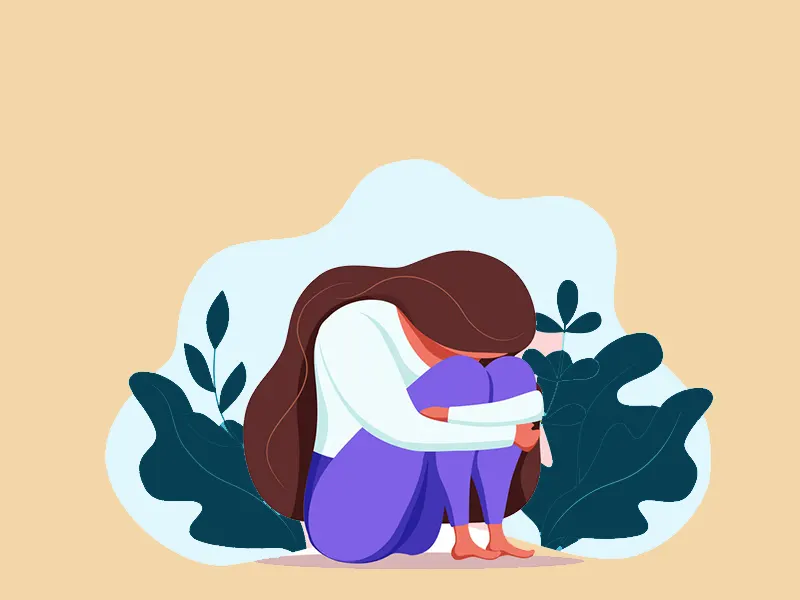The stages of mourning in adults have 5 main stages that may not occur in order and sometimesthe mourner stays in one of the stages for a long time. Mourning usually goes away completely by six months after the death, if the person cannot go through the steps successfully, he is at risk of developing disorders such as depression, obsession, anxiety, and so on. Although almost all of us will go through the stages of mourning, passing through these stages and the possibility of returning to normal is determined by the closeness to the lost person, mental health and personality, and many other issues.
If you feel that despite the passage of time, you are still mourning the loss of your loved one as much as before, or the severity of your grief is such that it has caused you problems, it is better to seek help from a specialist psychologist.
What are the stages of mourning?
Grief or mourning means the feelings and circumstances that a person will experience following the loss of a loved one, but sadness is not the only emotion one will experience during this time, and sadness is not the only emotion one will experience during this time. It should also be noted that loss can occur in either the death or the end of a relationship.
The various states that are experienced following the loss of a loved one are called stages of mourning. Although the stages of mourning are fixed in adulthood and all people experience these stages, in some cases the order for these stages may be broken. Sometimes you will experience it again despite going through a stage, and sometimes some stages happen together for one person.
Denial
The first stage of mourning in adulthood is denial. When you first encounter the reality of losing a loved one, you will most likely deny it and find it hard to believe. Although many people pass this stage quickly, one of the most serious problems that arise during the mourning process is stopping at the denial stage. If there is someone around you who, despite enough time, still does not believe in the loss of a loved one, it is better to seek help from a psychologist for treatment as soon as possible.
Anger
When the mourner accepts the truth and believes the death of his beloved, will get angry. This anger can be directed at oneself, the lost person, those around us, or even God and the laws of the world. Complaining about the current situation and trying to find the culprit for the loss of a loved one is the main symptom that can be seen at this stage.
Bargaining
Bargaining is the third stage of mourning in adulthood. The main feature of this stage is the regret that the person endures about the situation and the reason for naming it as bargaining is that in this stage the mourner is willing to do anything to bring back the lost person. One of the characteristics of this stage is pleading with God to change the situation or to constantly think that if certain work had been done, the deceased was now alive. These thoughts have great power in creating a feeling of remorse and damaging a person’s mental health. If you do not forgive yourself for the death or loss of a person in your life, you must see a psychologist to treat and improve the condition.
Depression
In this situation, the person almost accepts that he has lost a loved one and is not able to bring him back or change the situation. Facing this disability puts a person in a state of depression and sadness. Depression is one of the most common stages in which people with unresolved grief remain.
Accepting the absence of the deceased
Reaching this stage means that the person is ending his mourning. At this point, the person accepts the new conditions and tries to adapt to them. The last step of the mourning process and the key to achieving mental health is to reach this stage.
Symptoms of pathological mourning
Duration of mourning
In general, everyone will remain in a period of mourning for a while, depending on their personality style, as well as the type of relationship they have with others, and therefore we cannot consider a fixed time to get out of this situation. However, psychologists believe that most people return to normal after 6 months to a year. If the person has not yet recovered over time, they should see a psychologist.
Intensity of mourning
In addition to time, another important issue to consider is the severity of the person’s discomfort and behaviors. Sometimes, although less than 6 months have passed, the severity of a person’s impatience is higher than usual, or the severity or number of symptoms increases over time. It is better to seek help from a specialist for treatment in this case.
The level of activity of the person
One of the main indicators that can identify morbid grief or any other mental illness is the decrease in a person’s ability to work in the environment so that he or she has problems in the fields of work, education, or social relations.
Feeling uncomfortable
If the person is upset about the situation and is not able to get their life back to normal despite their best efforts, it is best to seek help from a counselor.
Symptoms of mourning
Emotional symptoms (Feeling): such as sadness, anger, guilt, anxiety, fatigue, numbness, and distress.
2- Physical symptoms: Feeling of tightness in the chest, shortness of breath, muscle weakness and thirst in the mouth, empty stomach.
3- Cognitive symptoms: such as disbelief, illusion, and feeling of the deceased’s presence.
4- Behavioral symptoms: sleep and eating disorders, distraction, restlessness, memorization of deceased objects, forgetfulness, dreaming of the deceased, crying.
Mourning treatment
1. Gathering of mourners
2. Creating new conditions and atmosphere
3. Doing different things
4. In the last step, use the drug


